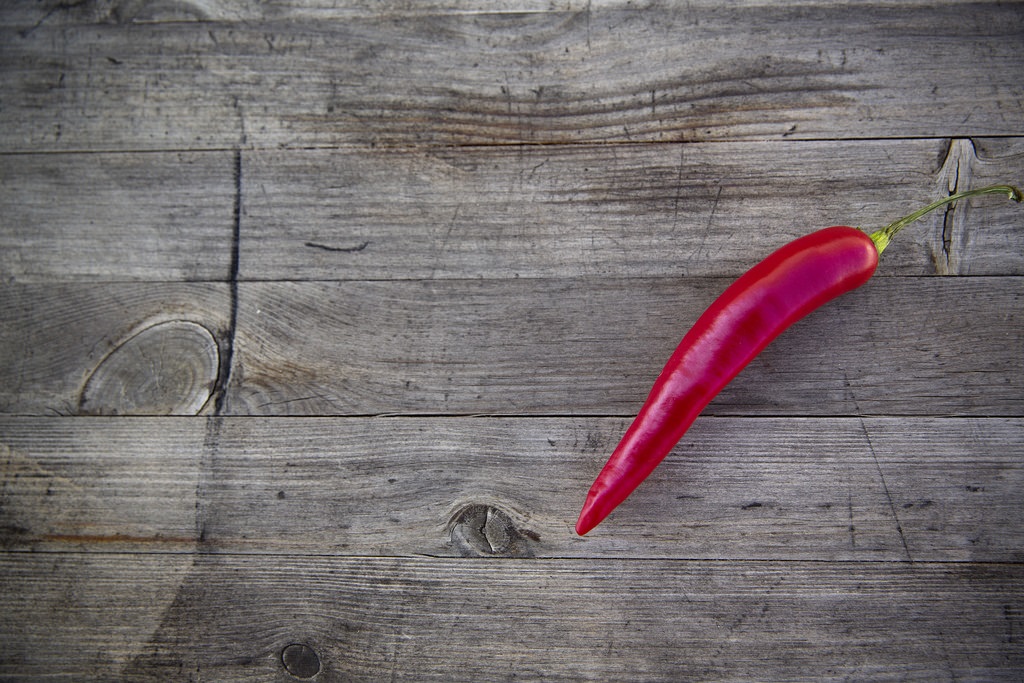Chili peppers nutrition facts
Chili peppers, despite their fiery hotness, are one of very popular spices known for their medicinal and health benefiting properties. The chili, actually, is a fruit pod from the plant belonging to the nightshade family (Solanaceae), within the genus, capsicum.
Chili plant is a small, perennial shrub with woody stem, growing up to a meter in height. It is native to Central American region where it employed as one the chief spice ingredients in Mexican cuisine for centuries. Later, it was introduced to the rest of the world by Spanish and Portuguese explorers during the 16th and 17th centuries. Today chili pepper is grown widely in many parts of the world as an important commercial crop.
Several cultivars of chili peppers grown all around the world. Depending upon cultivar type, it bears flowers which subsequently develop into fruit pods of variable size, shape, color, and pungency. And again, depending on the cultivar type, their hotness ranges from mild, fleshy (Mexican bell peppers) to fiery, tiny, Nag Jalokiya chili peppers of Indian subcontinent. The hotness of chili is measured in “Scoville heat units” (SHU). On the Scoville scale, a sweet bell pepper scores 0, a jalapeño pepper around 2,500-4,000 units, and a Mexican habañeros may have 200,000 to 500,000 units.
Inside, each chili fruit pod features numerous tiny, white, or cream colored, circular, flat seeds which clinging on to the central white-placenta.
To harvest, chilies can be picked up while they are green, or when they reach complete maturity and dry on the plant itself. In general, the fruits are ready for harvesting once they mature and turn red. They are then left to dry under sunlight and srink in size.
Chilies have a strong spicy taste that comes to them from the active alkaloid compounds: capsaicin, capsanthin and capsorubin.

Health benefits of chili peppers
Chili pepper contains an impressive list of plant derived chemical compounds that are known to have disease preventing and health promoting properties.
Chilies contain health benefiting an alkaloid compound in them, capsaicin, which gives them strong spicy pungent character. Early laboratory studies on experimental mammals suggest that capsaicin has anti-bacterial, anti-carcinogenic, analgesic and anti-diabetic properties. It also found to reduce LDL cholesterol levels in obese individuals.
Fresh chili peppers, red and green, are rich source of vitamin-C. 100 g fresh chilies provide about 143.7 µg or about 240% of RDA. Vitamin C is a potent water-soluble antioxidant. It is required for the collagen synthesis inside the human body. Collagen is one of the main structural protein required for maintaining the integrity of blood vessels, skin, organs, and bones. Regular consumption of foods rich in vitamin C helps protect from scurvy, develop resistance against infectious agents (boosts immunity), and scavenge harmful, pro-inflammatory free radicals from the body.
They are also good in other antioxidants such as vitamin-A, and flavonoids like ß-carotene, a-carotene, lutein, zea-xanthin, and cryptoxanthin. These antioxidant substances in capsicum help protect the body from injurious effects of free radicals generated during stress, diseases conditions.
Chilies carry a good amount of minerals like potassium, manganese, iron, and magnesium. Potassium is an important component of cell and body fluids that helps controlling heart rate and blood pressure. Manganese is used by the body as a co-factor for the antioxidant enzyme, superoxide dismutase.
Chilies are also good in B-complex group of vitamins such as niacin, pyridoxine (vitamin B-6), riboflavin and thiamin (vitamin B-1). These vitamins are essential in the sense that human body requires them from external sources to replenish.
Chili peppers have amazingly high levels of vitamins and minerals. Just 100 g provides (in % of recommended daily allowance):
- 240% of vitamin-C (Ascorbic acid),
- 39% of vitamin B-6 (Pyridoxine),
- 32% of vitamin A,
- 13% of iron,
- 14% of copper,
- 7% of potassium,
- but no cholesterol.







 ‘SELL AMERICA’ PANIC: World is Quickly Ditching US Assets as…
‘SELL AMERICA’ PANIC: World is Quickly Ditching US Assets as…





















